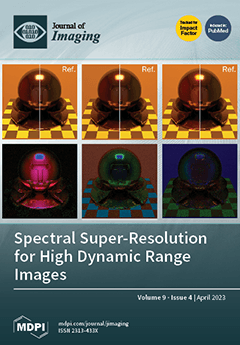Open AccessArticle
Vasari Scoring System in Discerning between Different Degrees of Glioma and IDH Status Prediction: A Possible Machine Learning Application?
by
Laura Gemini, Mario Tortora, Pasqualina Giordano, Maria Evelina Prudente, Alessandro Villa, Ottavia Vargas, Maria Francesca Giugliano, Francesco Somma, Giulia Marchello, Carmela Chiaramonte, Marcella Gaetano, Federico Frio, Eugenio Di Giorgio, Alfredo D’Avino, Fabio Tortora, Vincenzo D’Agostino and Alberto Negro
Cited by 22 | Viewed by 3453
Abstract
(1) The aim of our study is to evaluate the capacity of the Visually AcceSAble Rembrandt Images (VASARI) scoring system in discerning between the different degrees of glioma and Isocitrate Dehydrogenase (IDH) status predictions, with a possible application in machine learning. (2) A
[...] Read more.
(1) The aim of our study is to evaluate the capacity of the Visually AcceSAble Rembrandt Images (VASARI) scoring system in discerning between the different degrees of glioma and Isocitrate Dehydrogenase (IDH) status predictions, with a possible application in machine learning. (2) A retrospective study was conducted on 126 patients with gliomas (M/F = 75/51; mean age: 55.30), from which we obtained their histological grade and molecular status. Each patient was analyzed with all 25 features of VASARI, blinded by two residents and three neuroradiologists. The interobserver agreement was assessed. A statistical analysis was conducted to evaluate the distribution of the observations using a box plot and a bar plot. We then performed univariate and multivariate logistic regressions and a Wald test. We also calculated the odds ratios and confidence intervals for each variable and the evaluation matrices with receiver operating characteristic (ROC) curves in order to identify cut-off values that are predictive of a diagnosis. Finally, we did the Pearson correlation test to see if the variables grade and IDH were correlated. (3) An excellent ICC estimate was obtained. For the grade and IDH status prediction, there were statistically significant results by evaluation of the degree of post-contrast impregnation (F4) and the percentage of impregnated area (F5), not impregnated area (F6), and necrotic (F7) tissue. These models showed good performances according to the area under the curve (AUC) values (>70%). (4) Specific MRI features can be used to predict the grade and IDH status of gliomas, with important prognostic implications. The standardization and improvement of these data (aim: AUC > 80%) can be used for programming machine learning software.
Full article
►▼
Show Figures






